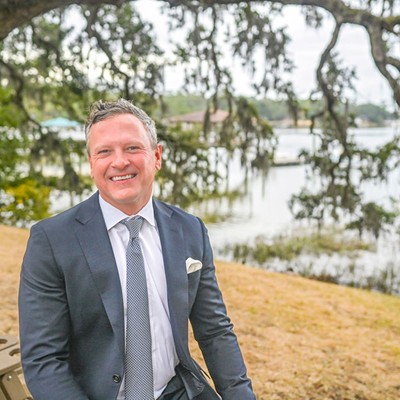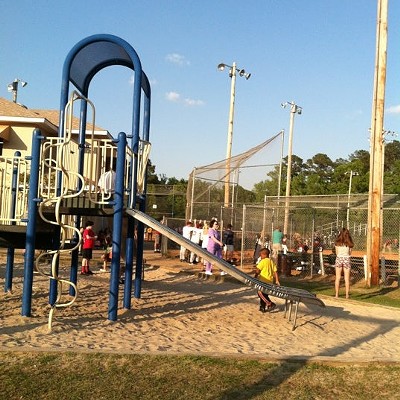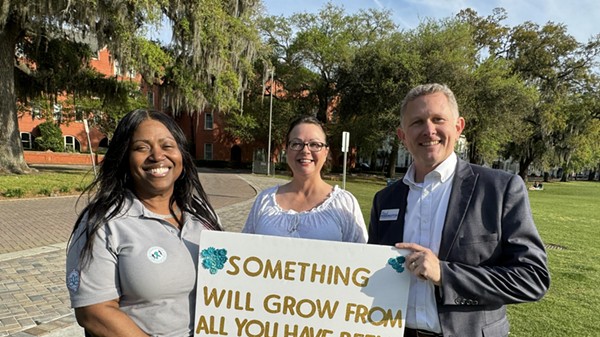Several years ago, while waiting for a public meeting to begin, I struck up a conversation with a woman seated next to me. As you might expect, if you chat with me long enough the topic of bicycling is likely to emerge.
While she didn't ride a bike herself, she told me she had noticed that cycling was becoming more popular. I said we needed more bicycle facilities in Savannah and she agreed enthusiastically. Investing in bicycling infrastructure, she suggested, would improve the quality of life in our community.
I was delighted. I was talking with a real life non-cycling cycling advocate. She understood that making Savannah safer and more welcoming to people who ride bikes would benefit everyone, not just cyclists. She assured me she would support bicycle infrastructure projects.
Then she said it:
"We really do need places all the bicycle people can go to ride, so they won't have be on the streets with traffic."
Sad trombone music.
I was imagining a bicycle network linking major destinations and providing safe routes for people who, by choice or necessity, travel by bike. I was talking about transportation.
She placed bicycle facilities in the same category as tennis court or playgrounds. She was talking about recreation.
I saw bicycles as vehicles. She saw them as sporting goods.
And I guess we are both right.
There are plenty of people in Savannah who regard bicycling as purely recreational. Many of them prefer off road facilities and are fearful of sharing streets with drivers. For example, the current effort to protect the McQueen's Island Trail against tidal erosion is proof of its popularity. No doubt the scenic river views factor in the appeal of the trail, which parallels U.S. Highway 80 between the Bull River Bridge and Fort Pulaski.
It's also true that many people like the McQueen's Island Trail because they feel comfortable only on a facility that is closed to motorized vehicles.
Yet the dichotomy between the protection of off-road paths and the convenience of on-street bike lanes is being proven false in communities across the country. New types of bicycle facilities do not require people to choose between safety and accessibility. Protected bike lanes are designed with bollards, raised islands, planters, buffer spaces and even parked cars to provide a physical separation for people on bikes from people in motor vehicles.
The term cycle track is also used to describe facilities that are located adjacent to or included in roadways, but offer cyclists the protection of segregation from motorized traffic.
Protected bike lanes attract cyclists of all ages and abilities. Erecting physical barriers between cars and bikes helps hesitant citizens overcome psychological barriers, as well. After easing into safe urban cycling, their confidence grows and they become more comfortable riding their bikes on other city streets. Studies also link protected bike lanes to increased economic activity, or as a recent Fast Company blog headline proclaimed, "Want To Make Money? Build A Business On A Bike Lane."
These types of facilities are being built in the heart of large cities including Atlanta, Chicago and Manhattan. They offer the benefits of a space designed exclusively for bikes, but without the isolation of an off-road trail. Protected bike lanes recognize the reality of where people need to go and offer them the comfort of separation from cars and trucks on the way.
Do we need more bicycle facilities in Savannah? Without a doubt. There are 8.75 miles of conventional bike lanes in the city. That means only 3.21 percent of Savannah's 727-mile street network is equipped with bike lanes.
Things are getting better, however, with the addition of the Washington Avenue and Price Street bike lanes in 2010 and 2012, respectively. Still, there's opportunity for improvement.
Should we consider possibilities beyond conventional bike lanes? Certainly. A 2011 study in Chicago found that 86 percent of people felt "safe" or "very safe" when riding on one of the city's protected bike lanes versus only 17 percent who felt safe or very safe in traditional bike lanes. These perceptions are based in reality.
A 2011 analysis by the New York City Department of Transportation found that after the installation of protected bike lanes, crashes resulting in injuries for all road users (this includes not just cyclists, but pedestrians and drivers, too) dropped by 40 percent and up to 50 percent in some locations.
The body of research on the benefits of protected bike lanes is growing. New models for implementation are appearing in other cities. We ought to be studying the best of these and putting them to work here.

























